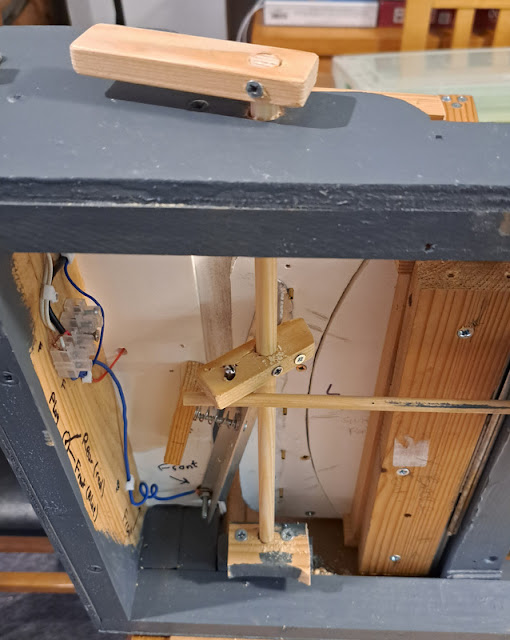I've a lot of small tasks ongoing in parallel at the moment, mostly preparing stock for Hexworthy in preparation for its first exhibition next month. The first to be finished was a small but important task, making ready-to-run coaches actually ready to run. Lovely though the Peco coaches are, they have a bit of a plasticky look (particularly the roofs) and are too clean even for a preserved railway.
The three Lynton and Barnstaple coaches had a number of little jobs done:
- The white plastic roofs were airbrushed with off-white acrylic, as much as anything to reduce the plasticky sheen and to take the edge off the starkness
- They then had a fine mist of black splattered over the top to represent soot, as with the Ashover coaches
- The lamp tops were then picked out in matt black (well, very dark grey), the little covers next to them were left white
- The plastic moulded hand-rail had the edge picked out in black, which from most angles makes it look much more like a handrail than a white ridge
- The steps, lamp brackets, and handrails on the coach ends were also picked out in matt dark grey/black, I also painted the buffer beams black
- The grey/black thinned slightly was also run along the footboards and underframes to soften them and make them matt
- A mid-brown acrylic was then airbrushed lightly over the footboards and underframes, allowing a little to mist onto the lower sides and ends.
The airbrushing was done very lightly, using the end-stop to limit paint flow, aiming for a very subtle weathering from track dirt and loco soot, but otherwise leaving the coaches clean as though regularly washed. I guess it reflects my increasing confidence with the airbrush.
I've also been painting passengers, a mix of Faller and the 3D printed Finescale Figures (the legless ones). These used acrylics, some were a bit shiny so I added a coat of Humbrol Matcote - which left them more shiny. Am I doing something wrong? Fortunately I had some Vallejo matt acrylic varnish, a couple of coats of which worked.
Passengers fitted to the L&B coaches, and also the WHR coach built a little while back. A couple of people per compartment works well, so 5-6 per coach is sufficient to give the impression of a partially occupied train.
The passengers are just visible through the windows, and the subtle weathering to roofs and underframes is effective at removing the plastickyness.
The four-wheelers got the same treatment. I didn't like the white roof on the brake so it was sprayed with grey primer, and the lamp-top painted black along with the steps on the ends. As with the L&B coaches a light airbrushing of soot from above and track dirt from below gives the impression of use, a few minutes work makes a big difference. I've not yet fitted passengers, although the small windows means it probably isn't essential.

















